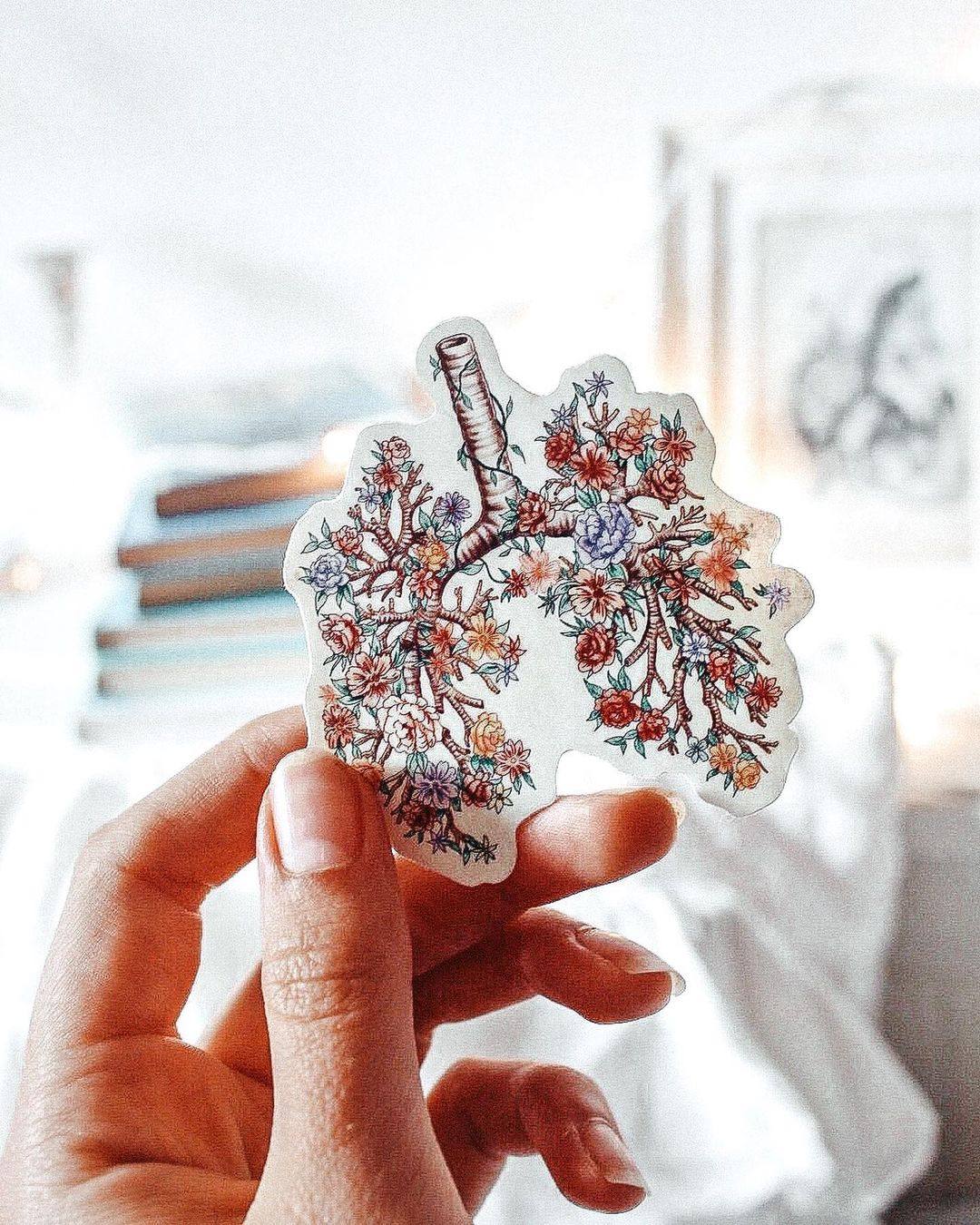
Please take a deep breath
How is our lung actually structured?
The two lobes of the paired lungs are further subdivided into lung lobes. The right lung consists of 3 lobes and 10 segments, the left only of 2 lobes and 9 segments (due to the position of the heart, space is somewhat limited here). As a result, the left lung has less space and has evolutionarily developed only 2 lobes.
This brings with it a special feature. If you choke on something, for example, there is also a greater probability that the object will end up in the right lung. You can see this quite well in the photos. This is simply because the right bronchial branch runs somewhat vertically, as an extension of the trachea, and the left branch branches off at an angle, making it less likely that something will fall in here.
Functionally, the air-conducting bronchial system is differentiated from the gas-exchanging alveoli.
Bronchial system (air-conducting):
The division of the lung into lobes and segments corresponds to that of the bronchial system. A lobar bronchus supplies a lung lobe with respiratory air, just as a lung segment is assigned according to the segmental bronchi.
The bronchial tree splits approximately 20 times. Main, lobar, segmental, and subsegmental bronchi are distinguished. Accordingly, the division into lung wings, lobes, and segments also takes place.
However, these sections only serve to transport air from the lung to the outside and vice versa. But not only that. These sections also have an important filtering function. Through various mechanisms, the inhaled air is filtered here so that pollutants, dirt, germs, and dust do not simply enter your lungs.
Gas exchange:
The respiratory bronchioles represent the starting point for gas exchange in the lungs. At their end, the alveolar duct (Ductus alveolaris), an accumulation of alveoli can be found (Sacculus alveolaris). The nearly 300 million alveoli in total offer an area of 100 m². Interalveolar septa separate the alveoli from each other.
That sounds really crazy, right? But it gets even better. The alveoli have a great connection to your blood system and are surrounded by many tiny vessels. This is where the actual gas exchange takes place. The fresh inhaled air is full of oxygen, which your cells need for numerous metabolic processes. On the other hand, there is your blood in the vessels, which is enriched with CO2 and contains only little oxygen because your cells have already used it.
Through this gradient and complicated biochemical processes, the CO2 now migrates into the respiratory air and is exchanged for the fresh O2. Your blood now has fresh oxygen again and can continue to supply your cells. You now exhale the old air and thereby breathe out the carbon dioxide.
Ever heard of a pulmonary artery embolism? This can occur, for example, when a thrombus detaches from the leg and migrates up into the lung. This partially or completely closes pulmonary vessels. The result? You have filled alveoli, but without blood. As a result, gas exchange can no longer take place in these areas --> enlarged dead space. This leads to oxygen deficiency and shortness of breath because your body can no longer breathe out enough CO2 and take in O2.
Smoking and the lungs
Did you know? Just consuming one cigarette can shorten your lifespan by 7 minutes. With 20 cigarettes per day, this results in a reduction of lifespan by 35 days per year!
Is tobacco consumption really worth it? Probably not. Moreover, smoking also represents a risk factor for various diseases and tumors.
Pretty much any disease can arise from smoking. In this respect, it is extremely questionable why smoking is so promoted. Although... actually not, because money plays a major role here, of course, but that's a different topic now!
That's it for the brief overview of the lungs. Did you like the article? Let me know and post your questions in the comments. You can also write in additions. :-)






